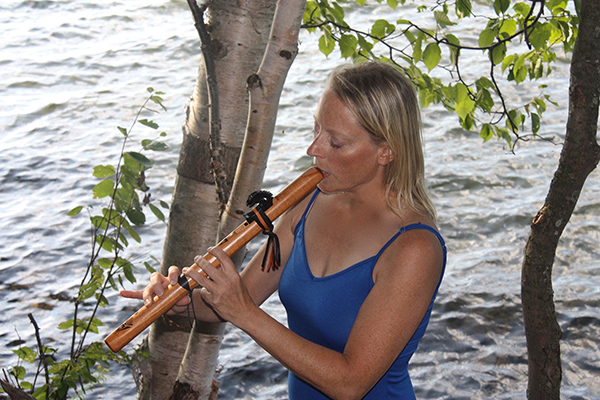Audience Location:
Canalside Buffalo, the historic western terminus of the Erie Canal
Date and Time:
June 20, 2017 at 10:30 am
Water Locale:
Buffalo River, where it discharges into Lake Erie near the head of the Niagara River

Choreographer(s):
Cynthia Pegado earned a BFA in Dance Performance, cum laude, at University of Cincinnati College Conservatory of Music before launching her international performance career in classical ballet, joining Scapino Ballet in The Netherlands, Ballet Royale de Wallonie in Belgium, Basel Ballet in Switzerland and National Ballet of Portugal. She currently enjoys co-creating site-specific work and performs ballet, contemporary, improvisation and contact improv. As a teaching artist, Cynthia is certified in the Cecchetti method of ballet technique, and Dance for PD®, for people with Parkinson’s disease. Her dryland ski conditioning classes are the only year-round program in the nation to prepare Parkinson skiers for adaptive alpine skiing. She is a Dance for PD® Stanley Wertheimer Fellow, and a New York State Council of the Arts grant awardee for her visual art-inspired dance program created for the Burchfield Penney Art Center.
History of Site and Related Water Issues:
Local legend suggests Buffalo River got its name from the french words “beau fleuve” (beautiful river) when French trappers and Jesuit missionaries, came to the region as early explorers. The Buffalo River includes the terminus of the Erie Canal which links the river with Lake Erie, one of the Great Lakes. The Erie Canal, built during the 1800’s, allowed through-shipping by connecting east-west transportation routes from the port of New York City to the Great Lakes basin. Grain and steel industry grew along the Buffalo River, dumping all their poison and toxic chemicals directly into the river.
Haunted by dire consequences of our industrial past, the Buffalo River actually caught on fire in 1968 because of the contamination. The Buffalo River was once a popular turnaround point for ocean liners because they could avoid spending thousands of dollars on having barnacles scraped off the hulls by staying overnight in the acid water.
Buffalo River was officially designated an AOC (Area of Concern) by the United States Environmental Protection Agency in 1989, due to toxins including PCBs, polycyclic aromatic hydrocarbons (PAHs), metals and industrial organics. After thorough assessment studies, significant river restoration began in 2011. Dredging has removed contaminated sediment and habitat restoration is currently underway. The Buffalo River is now an urban canoe trail, also enjoyed by kayak and paddle board.
Music:
“The Earth never offered man water as a gift. Water was a part of her. It is her blood. Her moving force.”
Michael Robinson, Cree poet.
Indigenous people from around the world hold water in special regard and share beliefs about the sacredness of water. Buffalo-Niagara Water Dances will open with live music on Native American flute, played by Cynthia Pegado, in recognition of our region’s first inhabitants, the Seneca, and other Haudenosaunee (Iroquois) Nations, original guardians of the local lakes and rivers.
Bob Sowyrda will play marimba, tenor guitar and conga drum with music he created especially for our Global Water Dances. Vocalist-GWD dancer Marsha Guillaume will sing a song of important cultural and historical relevance to our region.

The Performance:
Buffalo-Niagara’s Global Water Dance is performed by people with Parkinson’s disease.
Buffalo is one of about 100 cities worldwide, across eleven countries, with access to a dance program specifically designed for people with Parkinson’s disease.(www.danceforparkinsons.org) PDdance offers the joys and benefits of dance despite barriers of imbalance, tremor, rigidity and impaired cognitive ability due to PD, a progressive neurological disease. PDdance is a true art program, where there are no “patients”, only dancers. We are excited to share our artistry and interpretation of Global Water Dance with the world.
[soliloquy id=”9469″]
Environmental Impact:
PCBs are persistent organic pollutants that were used in industrial processes until the late 1970s. Research shows certain environmental exposures, for people with genetic predisposition, increase risk of developing Parkinson’s disease. PCBs have been found in relatively high concentrations in the brains of people who had PD says Caroline M. Tanner, M.D., Ph.D in “Environmental Factors and Parkinson’s: What Have We Learned?”
Results of a recent study show that Parkinson’s disease strikes the Western New York area especially hard. Portions of our eight county region lead the nation in prevalence rate of PD diagnoses; out of one million Americans currently diagnosed with Parkinson’s, 9,000 live in WNY.
Buffalo-Niagara’s Global Water Dance is performed by people with Parkinson’s disease. We aim to raise awareness of the need for increased research on effects of ingested environmental toxins and continued advocacy for clean water.
Directions to the Site of Performance:
The destination address for GPS navigation is “Canalside Buffalo” or 44 Prime Street, Buffalo, NY 14202.
The performance site is on the boardwalk overlooking the Buffalo River and will be marked with a sign “Everyone Can Dance”
Email for more information:
How can I get involved?
Come to “EVERYONE Can DANCE” (free) classes outdoors at Canalside Buffalo every Tuesday morning throughout the summer from 10:00-11:00. We will continue to learn and practice Global Water Dances. Diverse movement abilities are welcome, even those who need to remain seated.
Local Website:
Water was a driving force in Buffalo’s rise through industrialization, its subsequent economic decline, and efforts by community leaders to re-connect communities to the water. Learn about our region’s water resources and the unique character of the Buffalo River by watching this video “IF OUR WATER COULD TALK”. Explore issues of water resources conservation, environmental cleanup, community and public access. “IF OUR WATER COULD TALK” strives to answer the question, “are we listening to the water?”
* TV productions: If our water could talk
* Facebook account of Everyone can dance
* Twitter account Cypegado